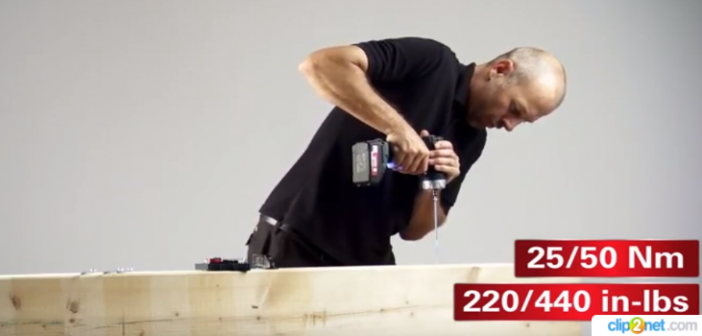A cordless drill is one of the primary tools that should be in every family’s toolbox. Perhaps right now you cannot think of a situation in which you may need one, but when it arises, you will be happy to have one handy. It is undoubtedly better to select one at your leisure than to look for somebody to borrow one from in a hurry or buying the first model you stumble upon. But what should one look for in a cordless drill? Let’s take a closer look.
1. Decide what type you need
Drills are generally subdivided into three types:
- Light duty – cheap drills with small motors and a fixed ¼-inch socket. Their use is mostly limited to assembling furniture and doing other small jobs around the house. However, they are light and easy to handle, which makes them an excellent choice for these tasks;
- General-use – a golden middle ground, usually more than enough for most jobs;
- Heavy duty – more powerful batteries, can accept almost any bits and have enough power to drill through virtually anything.
2. Handle
Drills come with two types of handles: pistol grip and T-handle. T-handle offers better balance and is more convenient when you need to use the tool in a tight space. The pistol grip allows you to apply greater pressure, which is essential when you drill through particularly hard materials or drive large screws. Some drills have auxiliary handles that make heavier drills much more manageable.
3. Power
The power in a cordless drill is measured in battery voltage and ranges from 6V to 18V. At a glance, everything is simple: the higher the power is, the greater is the spinning strength and the ability of the drill to overcome resistance. Greater spinning strength allows you to drill through harder materials. However, it does not mean that you should just grab the model with the highest voltage. High-end voltage models usually take longer to recharge and, what is more important, are much heavier: an average 9.6V drill weighs about 3.5 lbs. In 18V models, this value goes as high as 10 lbs. In other words, the choice depends on what types of jobs you are going to do with it. Study some drill reviews and pay attention to the recommended applications of this or that model.
4. Battery types
Traditionally, cordless drills use nickel-cadmium (Nicad) batteries. However, they are gradually being replaced by nickel-metal hydride (NiMH) power cells, which last longer while being smaller. They are also a good choice for environmentally conscious individuals, as they do not contain cadmium, which is extremely dangerous.
5. Chargers
All cordless drills are equipped with a battery charger, and you should study its characteristics carefully before buying. The thing is, their recharge times can be anything from 20 minutes to a few hours. It may seem that faster recharge is better by definition, but in reality it is not always so. A professional builder who uses a drill every day may need to recharge it quickly, but if you need it only for occasional repairs at home, slow recharge times will not inconvenience you much. Besides, fast recharge can be dangerous: the excessive heat it generates can damage the battery.
6. Clutch and selective modes
Some drills only have fastening and drill modes. Others include an additional hammering mode (they are also known as combi-drills), allowing you to drill through masonry, concrete and steel. They are naturally more expensive than their normal counterparts. However, keep in mind that they are fine for making holes only up to 14-16mm. If you know you are going to drill bigger holes often, it may be a good decision to do with a regular two-mode tool and invest into an additional heavy-duty hammering drill.
7. Lighting
Many modern drills have a small LED flashlight that turns on when you press the trigger. This option is much more useful than one may think, as anybody who had an experience of drilling in a tight dark place will tell you. It may not be necessary on a regular basis, but you will be thankful for getting a tool with this function when the need for it arises.
We hope that this guide will help you choose precisely the tool you need!




